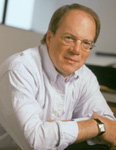 Wisconsin Lawyer
Wisconsin Lawyer
Vol. 83, No. 10, October 2010
 Every year, thousands of people visit the state capitol building in Madison. My 100-year-old aunt, who has visited every state capitol in the country, declared to me a dozen years ago that ours was the most beautiful capitol building she had ever seen. The building, which itself will soon reach its 100th birthday, is rich in symbolism, history, and tradition as well as neoclassical architectural beauty.
Every year, thousands of people visit the state capitol building in Madison. My 100-year-old aunt, who has visited every state capitol in the country, declared to me a dozen years ago that ours was the most beautiful capitol building she had ever seen. The building, which itself will soon reach its 100th birthday, is rich in symbolism, history, and tradition as well as neoclassical architectural beauty.
The location of several of the offices within the capitol symbolizes the relationships within and among the different branches of government. The governor’s office and the attorney general’s office are on the first floor in the same wing of the building. The other three wings on the first floor originally held the other major elected offices of the executive branch – the superintendent of public instruction, the secretary of state, and the state treasurer. In these three wings on the second floor are the chambers of the state senate, the state assembly, and the public hearing room – all representatives of the people of Wisconsin. The fourth wing of the second floor, directly above the offices of the governor and the attorney general, is home to the supreme court, with the chambers of the seven justices surrounding the beautifully restored supreme court hearing room.
As visitors enter the hearing room, they pass through a small antechamber, approximately 20 feet wide. Its walls, like those in the hearing room, are encased in marble. The portraits of all the chief justices of the Wisconsin Supreme Court hang on those walls. Last month, in a ceremony joining tradition and symbolism, the portrait of Chief Justice Nathan Heffernan, the 23rd chief justice, was added to these walls of history.
While all the other oil and photographic portraits and marble busts of Wisconsin’s chief justices in the room are owned by the Wisconsin Supreme Court, the oil portrait of Justice Heffernan is owned, by a quirk of history, by the Wisconsin Historical Society. When the portrait was received from the artist, Benjamin Donald McCready, all the portraits of the chief justices and those of other members of the court were held in temporary storage at the Wisconsin Historical Society because the State Capitol’s east wing was being renovated. The historical society accessioned the portrait, essentially taking title to it. Through the efforts of the Wisconsin Supreme Court, the State Bar, and Justice Heffernan’s son, attorney Michael Heffernan, arrangements were made to permanently loan the portrait to the Wisconsin Supreme Court to join its colleagues on the antechamber walls.
You will find Chief Justice Heffernan’s portrait – soon to be joined by a portrait of his successor, Chief Justice Roland Day – hanging on the northeast wall of the antechamber, to your left as you enter the hearing room.
Wisconsin Lawyer
